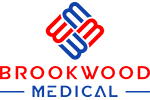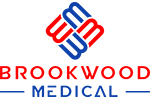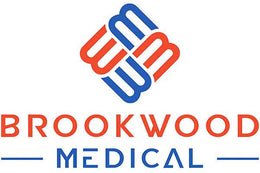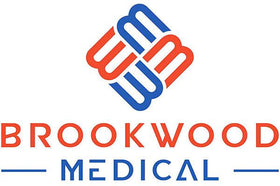The Rise of Sports Masks: A New Essential for Athletes

In recent years, the landscape of athletics has evolved dramatically, with various trends aiming to enhance performance, safety, and overall well-being of athletes. Among these trends, the emergence of protective masks has captured significant attention. Once seen merely as tools for health safety, sports masks are transforming into indispensable gear for athletes across multiple disciplines. This blog explores the reasons behind this rise in popularity, the benefits of wearing protective masks, and how they are impacting athletic performance.
The Background of Protective Masks in Sports
Historically, masks served specific purposes, particularly for contact sports. Athletes in basketball, football, and hockey often wore masks to prevent facial injuries and safeguard themselves during intense physical confrontations. However, the introduction of the global pandemic catalyzed a wider acceptance of masks in various sporting contexts, leading to widespread innovation in designs and materials.
COVID-19 and Its Impact on Athletes
When the pandemic struck, athletes around the world faced unique challenges, including changes in training routines and event cancellations. The use of protective masks became a necessity to keep athletes safe while training in groups or competing in events. This necessity transformed into a popular trend, as coaches and athletes sought to find the most effective ways to incorporate these masks without compromising performance.
The Practicality of Wearing Protective Masks
As athletes return to their routines, the practicality of wearing protective masks has gained momentum. Here are several reasons why athletes are embracing this new accessory:
- Enhanced Safety: The fundamental purpose of protective masks is to help reduce the spread of germs and viruses. For athletes, this added layer of protection can be crucial, especially when competing or training in close proximity to others.
- Comfort and Breathability: Modern advancements in mask technology have led to the creation of breathable, lightweight fabrics that allow for optimal airflow. Athletes can now find masks designed specifically for strenuous activities without feeling hindered or suffocated.
- Injury Prevention: Masks can provide additional protection against potential injuries sustained during practice or competition. They can shield the face from impacts, providing an extra layer that can help prevent cuts or bruises.
- Encouraging Recovery: Some athletes have found that wearing protective masks during low-intensity training sessions can improve endurance over time. This method can also facilitate better respiratory control, leading to enhanced performance in the long run.
The Evolution of Sports Masks
As athletes become more aware of the benefits of protective masks, manufacturers are innovating designs tailored to specific sports. Here are a few sports where protective masks are making their mark:
Running
Runners face unique challenges when it comes to wearing masks. Modern running masks are designed to ensure stability while maintaining breathability. Many feature sweat-wicking materials that prevent moisture buildup, keeping athletes comfortable during longer runs.
Cycling
Like runners, cyclists have also benefited from the introduction of specialized masks. These masks often encompass a snug fit to withstand wind resistance and come with filters to block dust and allergens. Cyclists can now enjoy the outdoors without compromising their health.
Team Sports
In team sports, protective masks are becoming increasingly common. Sports like basketball and soccer have witnessed the rise of masks that offer facial protection while allowing freedom of movement. Coaches emphasize the importance of safety, making these masks an essential part of the game.
The Psychological Impact of Protective Masks
Beyond the physical benefits, wearing protective masks can have a significant psychological effect on athletes. Knowing they are taking precautions boosts confidence levels—while focusing on training or competition—by reducing anxiety about potential health threats. This newfound confidence allows athletes to focus more on their performance rather than worrying about exposure risks.
Fostering a Safety Culture
By adopting protective masks, teams can foster a culture that prioritizes health and safety. Athletes who see their peers wearing masks may feel encouraged to do the same, creating an environment where everyone takes responsibility for their well-being.
Choosing the Right Protective Mask
With various options on the market, choosing the right protective mask can be daunting. Here are some factors to consider before making a purchase:
- Material: Opt for masks made from breathable fabrics that offer moisture-wicking properties. Materials like polyester or specialized microfibers often provide comfort during intense workouts.
- Fit: A secure fit is critical for athletic performance. Consider masks that have adjustable ear loops or straps to ensure they stay in place, even during high-impact activities.
- Design: Look for masks that feature designs specifically for your sport. Some brands now offer masks designed to accommodate helmets or goggles, providing athletes with a seamless experience.
- Functionality: Some masks come with replaceable filters or additional features, such as UV protection, ideal for outdoor sports. Consider your specific needs when selecting your mask.
The Future of Sports Masks
The future of protective masks in sports looks promising. As athletes continue to advocate for safety and prioritize their health, it’s likely that these masks will become even more prevalent. Manufacturers are expected to innovate further by creating masks that blend style, function, and performance metrics.
Integration with Technology
From fitness tracking to health monitoring, we may soon see high-tech features integrated into protective masks. Think built-in sensors that monitor breathing patterns or heart rates, offering real-time feedback to athletes during their workouts. The incorporation of technology could enhance an athlete's understanding of their performance while keeping them safe.
Sports Masks: A New Trend with Lasting Impact
As we navigate this new athletic landscape, the rise of protective masks signifies a shift in athlete mindset and gear necessity. Moving beyond a temporary solution, these masks are setting a precedent for a new era where health and safety are paramount. Athletes who embrace these changes are not only helping protect themselves but also paving the way for future generations who will view masks as an essential part of the sport.
A Look Ahead: What Athletes Can Expect
The continuous evolution of protective masks underscores the ongoing commitment to athlete safety. Embracing these innovations is no longer just a trend—it's a necessity. Athletes, coaches, and teams alike must stay informed about advancements in mask technology and function.
Ultimately, the rise of sports masks is more than just a response to a pandemic-driven necessity; it's the evolution of athletic gear that prioritizes health and safety. For athletes everywhere, this shift towards protective masks redefines performance while embedding a culture of safety that will persist long into the future. The next time you step onto the field or hit the gym, remember that wearing a mask could be the key to performing at your best today and tomorrow.






